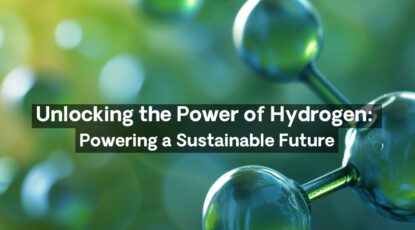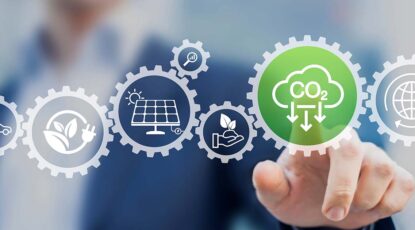The modern energy system is not so modern anymore. Extreme weather makes addressing energy challenges difficult for states, utilities, businesses, and communities. The centralized grid is largely unprepared for today’s unpredictable climate landscape.
Evidence of this is rampant. Poor weather contributed to a power outage in Idaho recently, when a mix of rain, sleet and snow contributed to an explosion on a power line. A tense moment was captured on a police dash cam as a fuel tanker drove across the downed lines, launching fireballs into the air as the truck barely escaped. Meanwhile, thousands were without power as utility crews tried to fix the problem.
Extreme weather events in Texas last month led to severe cold temperatures sweeping through the Lone Star State, causing power outages for millions. Struggling to manage increased pressure on their grid infrastructure, central power grid operator ERCOT was forced to impose rolling blackouts to avert further catastrophic consequences and contain the crisis to a weeklong battle. As one weather forecaster put it, “There’s really no letup to some of the misery people are feeling across that area.” A day without power quickly turned into seven days of fear and uncertainty.
At a grocery store that had lost power in February, one Texan told CNN that during the rush to find clean water and food, he missed the state’s rolling blackout notifications, saying, “We were given the impression that it wasn’t going to be bad. I didn’t even see the rolling blackout warnings. It just went dark.”
Power Outages Explained: Points of Failure
The ever-increasing number of climate events has exposed our grid’s vulnerabilities, and potential failures are becoming harder to predict.
Here are the two most common points of failure when it comes to widespread grid outages:
- Generation Failures: this is when there is not enough power supply to meet the demand on the grid. For example, every summer millions of people turn on their air conditioning units during the hottest days. This requires much more power than the grid infrastructure is set up to deliver, resulting in outages in areas where there is not enough power to go around. The same event happens in cold months when massive amounts of people turn on heating devices. Both situations overload the grid, causing a generation failure.
- Transmission & Distribution Failures: this usually happens when the ability to distribute power from a generation facility is disrupted. For example, high winds can topple above-ground power lines, ceasing electricity transmission to regional areas. This has become a serious issue in recent years for states like California, where a deadly mix of heat, high winds, and dry conditions have downed power lines, sparking some of the worst wildfires in state history. In other states prone to severe winter storms, heavy snow and icy conditions can disrupt transmission and distribution lines and cause outages in the communities they’re set up to feed.

Power Outage Solutions: Distributed Generation
Emerging technologies, business models, and other forms of innovation have made it feasible, and more recently imperative, for businesses and communities to invest in their own energy independence. This is distributed generation, and it is completely shifting the energy paradigm, providing a clear path forward for those seeking to gain more control over their electricity supply and reduce or eliminate their risk of outages.
While no energy generation technology is perfect, technologies and fuels that stand out do so for their reliability. Chief among those is natural gas, a plentiful, inexpensive source of energy. Though not a renewable source of energy, the highly efficient use of natural gas can result in a lower emissions footprint than the average US grid. It travels through the highly reliable, mesh-network natural gas infrastructure, and can be stored in both large and small quantities, making it easily accessible. A report from MIT declared natural gas as “a key backup source for intermittent renewables such as wind and solar power,” yet in many parts of the nation it has become the main source of power.
Meanwhile, distributed technologies like fuel cells have emerged as a critical piece of the puzzle. Fuel cells convert fuel into electricity without combustion at high efficiencies – producing in some cases twice as much electricity as the grid can from the same amount of natural gas. Due to using an electrochemical reaction instead of combustion, fuel cells produce virtually zero of the criteria air pollutants that form smog, cause asthma, or worsen public health, and what is left over is a purer stream of CO2 that can be captured, utilized, and/or sequestered to further reduce or eliminate CO2 emissions.

Fuel cells are also helping to accelerate the energy transition by opening up more pathways for carbon reduction. Being fuel-flexible, fuel cells can also operate at zero emissions by accepting biogas (renewable natural gas) that is often created at dairies, landfills, and wastewater treatment plants. They can also run on pure hydrogen, and in the near future, can be configured to produce hydrogen utilizing excess energy from sources like solar, wind, or nuclear plants.
The combination of flexible sustainability pathways, enhanced reliability and resiliency against outages, and predictable power that puts businesses and communities in control of their own electricity, makes fuel cells an ideal long-term technology solution to help accelerate the energy transition.
Fuel-flexible technologies like fuel cells that can combine into a microgrid with other forms of onsite generation like solar and batteries safeguards business operations and protects the bottom line from extreme weather-related outage costs.
It’s time to take control of your power supply. Avoid even a single day without power by investing into making your organization more resilient with distributed generation.



